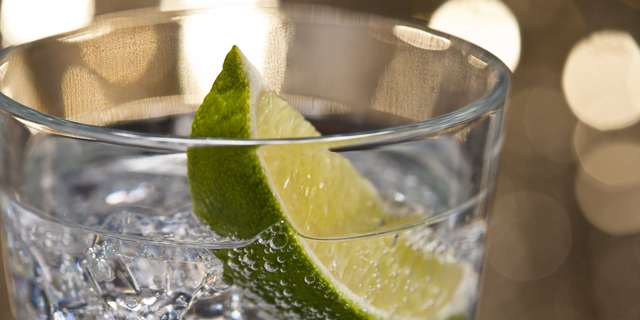Despite gin’s traditional English roots, the classic gin and tonic mixed drink has a distinctive Latin heritage. For starters, tonic water’s principle character is the taste of quinine, a malaria-fighting agent founded in cinchona bark from South America. And the gin and tonic – or gintonic, as it is commonly called – is the national cocktail of Spain.
A properly made gintonic with natural, high-quality ingredients is likely to change a gin skeptic’s mind about the spirit, which can be complex and range in flavors depending on production techniques and style.
TLK asked Jorge Figueredo, general manager of Jaleo, a Spanish tapas restaurant by José Andrés in Washington, D.C., how to make the perfect gin and tonic. Jaleo features six signature G&Ts with six very different gins, small batch tonics and a house-made tonic syrup made from cinchona bark, coriander, lemon verbena and citric acid. There’s even a G&T sorbet on the menu, which pays homage to Spain’s after-dinner G&T digestive. And, in case you were wondering, Tanqueray 10 gin holds its flavor the best when frozen, according to Figueredo.
Don’t struggle to choke down an average gin and tonic again. Here, five tips for making the perfect cocktail. [pagebreak]
Choose a gin first. Taste the gin by itself before mixing with tonic. The type of gin you choose will determine your gin and tonic’s defining characteristics. Do you prefer an herbal drink or a dry drink? Do you want to tone down the quinine or enhance it? Botanical gins, which are made with a combination of spices and herbs that bring out floral flavors will make for a different G&T than a dry gin, which is juniper- and grain-forward.
Then choose a tonic. The quality of tonic water is crucial to creating a dynamic G&T. “If you can’t use a good tonic, don’t bother making the drink,” Figueredo says. Mass produced, store bought tonic waters contain fake sugars and chemicals, while small batch brands like Fentimans, Fever-Tree and Q Tonic taste better and are made with natural sweeteners like agave nectar. Choose tonic based on the qualities in the gin and counter them for balance, such as pairing a sweet or lighter tonic with dry gin.
Deconstruct the gin for garnish. Adding floating garnishes to the cocktail not only makes for good presentation, but also aromatics that gently arouse the nose before taking a sip. If the gin is distilled with coriander and cardamom, use a couple of coriander seeds and cardamom pods in the glass with the traditional G&T citrus peel. But don’t overdo it: most of the drink’s appeal is in its simplicity. [pagebreak]
Use a proper glass. Nix the traditional Collins glass. Jaleo serves G&Ts in large rimmed rocks glasses, almost like red wine stemless glasses. “The bigger the glass, the bigger the aroma,” Figueredo says. “We want you to feel important. But you don’t need to have a martini in your hand with three olives and an onion.” Making a bigger deal of the G&T’s presentation elevates its status and enhances the sensory experience of drinking it.
Ice matters. Figueredo’s team hand cuts blocks of dry ice that won’t melt quickly, but home bartenders can get a similar effect by boiling water to close air pockets, letting it cool and then freezing it into oversize ice cube trays. Use this one cube in your glass to keep the G&T as pure as possible while also keeping it chilled while you sip.
Drink G&Ts with food. “Gin cuts grease and fats really well,” Figueredo says, so don’t be afraid to pair G&Ts with food. The same principles apply to pairing as with wine. A light and airy, herbal G&T may go well with shrimp while a drier, juniper-forward or Old Tom gin-based drink, like Jose’s Gin and Tonic below, pairs well with pork.
Next, a recipe for the perfet gin and tonic. [pagebreak]
- 1 ounce Hendricks gin
- 1 bottle Fever-Tree tonic
- 2 juniper berries
- 1 lime wheel
- 1 lemon peel
- 1 leaf lemon verbena



![Making Mealtime Matter with La Familia: Easy Sofrito [Video]](https://thelatinkitchen.com/wp-content/uploads/2015/10/sofrito-shutterstock__0-500x383.jpg)
![Easy Latin Smoothies: Goji Berry Smoothie [Video]](https://thelatinkitchen.com/wp-content/uploads/2015/12/goji_berry-shutterstock_-500x383.jpg)
















![Fun and Fast Recipes: Fiesta Cabbage Salad [Video]](https://thelatinkitchen.com/wp-content/uploads/2015/11/fiesta_cabbage_slaw-shutterstock_-500x383.jpg)









